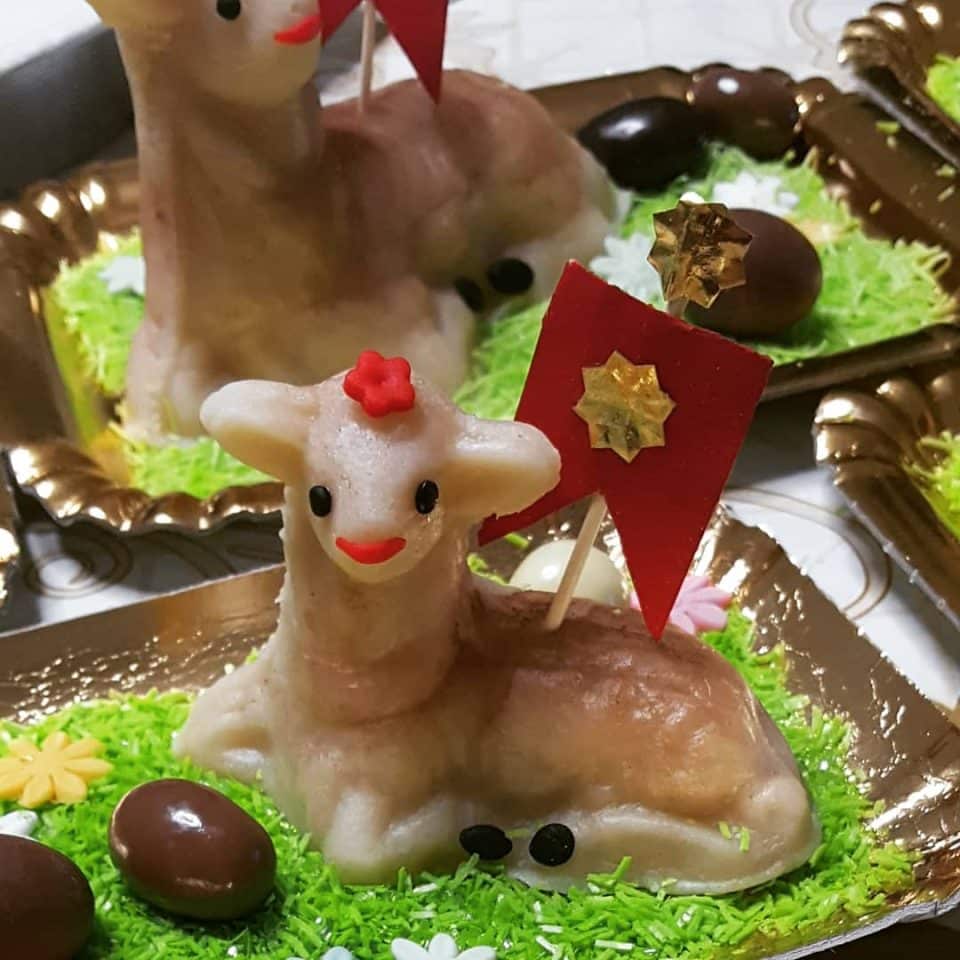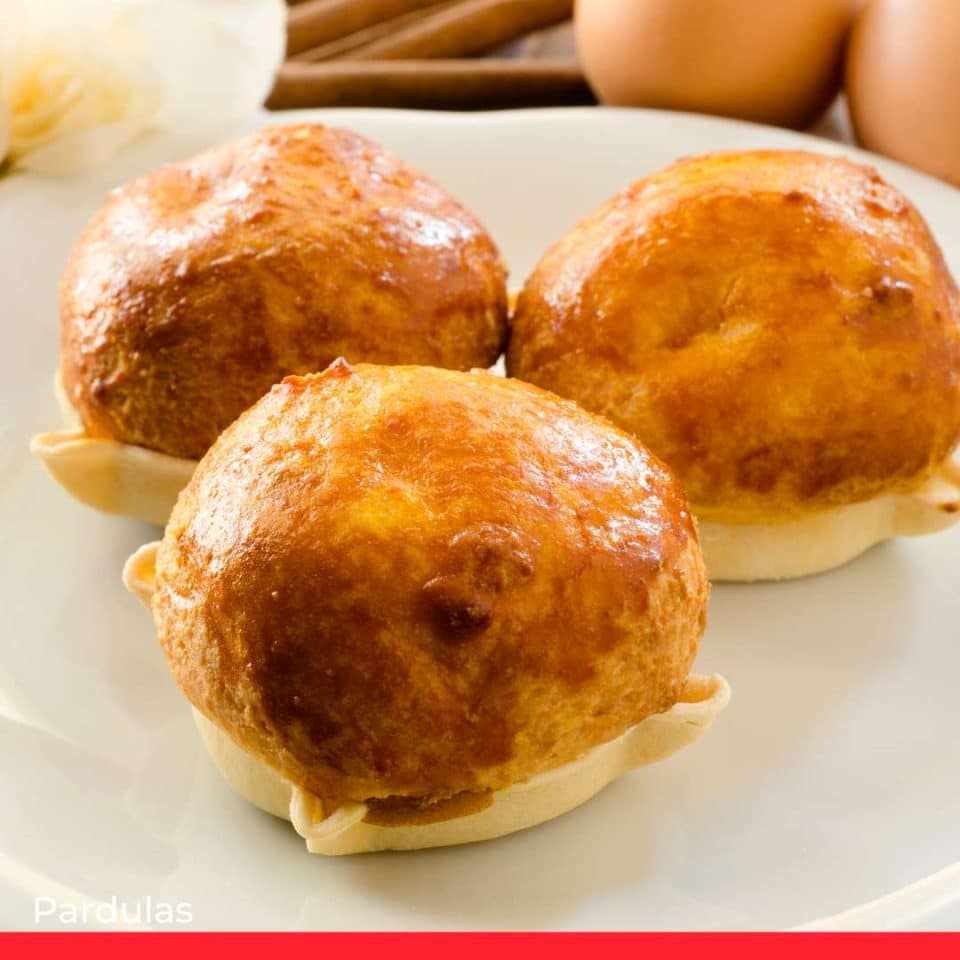“Regione che vai, specialità che trovi.” This typical Italian saying perfectly describes the unique gastronomic identity of each of its regions, boasting flavors, colors and raw materials typical of each specific area.
And while this is particularly visible with savory Italian dishes, Easter cookies and desserts are no exception to this regional culinary diversification.
From north to south, east to west, every corner of Italy has proudly created for centuries its own signature desserts, drenched in religious symbolism. But there is one thing that all regions have in common: while the bunny is a typical Easter symbol in most northern European countries, in Italy, Easter is all about eggs.
Easter eggs are a symbol of rebirth and fertility, and a heralding of the coming of spring. The tradition of gifting decorated eggs dates right back to the Medieval Ages, when rich aristocrats would award them to their servants. Today these traditions are wonderfully kept alive through the various culinary creations made with them: from savory dishes to the colorful and delicious small chocolate eggs.
There is truly no better way to end the strict fasting of Lent than to delve into the delicious sweet delicacies that carry ancient historical and religious significance. So, let’s do the same and discover some of the most delicious Italian Easter cookies and desserts.
1. Colomba di Pasqua (Easter Dove Bread)

Shaped like a dove, from which it takes its name, Colomba is undoubtedly the symbolic Easter cake per eccellenza. Made of soft dough and covered with pearl sugar, almonds and sometimes chocolate or pistachios, this Easter delicacy is originally from Lombardy but has now become a symbol of the festivity throughout the country.
Colomba holds a strong symbolic and folkloristic power: in the Book of Genesis, after the universal flood; it’s the dove that flies back to Noah, carrying an olive branch in its beak as a symbol of peace and the reconciliation between God and his people.
While in cultural folklore, it is believed that a holy man, Saint Columbanus, was invited by Queen Theodolinda to attend a sumptuous banquet, rich in meat dishes. In order not to transgress the rule of abstaining from meat during Lent, Saint Colombanus transformed the succulent red meat into majestic dove-shaped breads.
2. Pastiera Napoletana (Neapolitan Tart)

Originally from Naples, pastiera is an irresistible short-crust pastry tart with a delicious filling of ricotta, candied fruit, sugar, eggs and vanilla.
The sophisticated flavors and richness of the ingredients are reminiscent of the gastronomic culture of the Renaissance courts, but its cultural value is decidedly tied to ancient myths.
According to one of these, when Parthenope elected the Gulf of Naples as her home, the population brought her seven gifts as a welcome: flour, a symbol of richness, ricotta, a symbol of abundance, and so on. And as a sign of her gratitude, Parthenope mixed them all up together, creating this irresistible sweet pie, which was to become a symbol of the city.
3. Cassata Siciliana

Cassata is probably one of the most renowned Italian desserts, and few people might know that it is actually a symbolic Sicilian cake prepared during the Easter festivities. Cassata has remarkably old roots dating back to the Arab domination of Sicily in the 9th Century.
The Arabs had introduced to Palermo, sugar cane, lemons, bitter orange, mandarins and almonds, which, together with ricotta cheese, produced in the region since prehistoric times, make up the basic ingredients of this wonderful recipe.
The term in fact derives from the Arabic Quas’at, which refers to the large bowl used for mixing the ricotta with sugar. Cassata is traditionally topped with candied fruits and skillfully decorated with shapes and ornaments, making it a truly delicious artwork!
5. Le Pecorelle di Martorana (Marzipan Lamb Cookies)

These sweet-looking (and tasting) marzipan lambs are probably the Easter dessert that more than any other embodies the cultural symbolism of the Festivity, being a symbol of the sacrifice of Jesus Christ.
Made using the typical Pasta di Martorana, these marzipan lambs are beautifully decorated with all sorts of ornaments, especially the ever-present purple flag with a gold fringe, which, in heraldry, is used to indicate the monogram of Christ.
These delicious cookies certainly can’t be missed in a traditional Sicilian household.
5. Salame del Papa

This chocolate salami-shaped dessert, known as the Pope’s salami, is an incredibly easy and tasty dessert from the Piemonte region. Made with Piedmontese hazelnuts, which are one of the basic ingredients for this irresistible pudding, the Salame del Papa is the ultimate treat with which to end a delicious Easter lunch.
The origin of the name is tied to the fact that the Pope, during Lent, would banish the consumption of meat. A famous Italian chef, therefore, prepared a special dish which resembled the shape of the salami, but clearly differed in taste!
6. Pinza

Pinza is a delicate gold-colored sweet bread typical of the northern Friuli-Venezia Giulia region, which is traditionally eaten on Easter morning.
Made with a slightly sweet dough, Pinza is the ideal accompaniment for jams and spreads, and creates the perfect balance of taste when combined with salty cold cuts.
Before being baked, a T shape is traditionally carved on the top of the loaf, which both helps leavening making the loaf nice and soft, and represents the crucifix. In fact, its round shape is reminiscent of the sponge with which one of the centurions gave vinegar to Jesus while he was crucified.
7. ‘Ncinetti (Southern Italian Easter Cookies)

The so-called ‘Ncinetti or Uncinetti, are traditional Italian Easter cookies originating from the southern region of Calabria. Simply made with eggs, flour and sugar, these unique cookies are renowned for the thick top layer of anise-scented icing and colorful sugar sprinkles.
According to tradition, these wonderfully looking biscuits are prepared in the week before Easter, on Palm Sunday, and hung to decorate the palms outside the churches.
8. Pardulas (Sardinian Easter Cake)

On Italy’s largest island, Sardinia, the typical Easter dessert is an irresistible cake with a saffron-flavored and lemon-scented ricotta filling: a true ode to the region’s indigenous ingredients.
Known as Pardulas de Arrescottu in the South of the island, and Casadinas in the North, this wonderful delicacy is an explosion of flavors and aromas, and is strategically paired with a small glass of the aromatic Zedda Piras, a dessert wine baring the distinctive aromas of the Mediterranean Maquis.
9. Scarcella Pugliese (Italian Easter Egg Cookies)

It wouldn’t be Easter in the region of Apulia without the traditional large doughnut-shaped biscuit, made using simple ingredients, such as eggs, sugar, flour and butter, often with the addition of lemon zest.
It is tradition to place hard-boiled eggs on top, as a symbol of Christ’s resurrection.
In fact, “scarcella” derives from the verb “scarcerare”, meaning “to set free from jail”, alluding to the fact that Jesus was freed from sufferance and sin by ascending to heaven. It is widely believed in the region that eating these delicious biscuits will free you from original sin – you might not believe it, but why take the risk?
10. Torta Tagliolina (Italian Pasta Cake)

This delicious dessert from Emilia-Romagna is undoubtedly one that fills them with culinary pride. Fusing sweet and savory, this short-crust pastry cake is literally made using – yes, you have it – tagliolini pasta! The use of this unusual cake ingredient is said to be a tribute to Lucrezia Borgia’s beautiful golden hair.
The egg, sugar and almond filling blend nicely to create the ultimate creamy consistency, which melts wonderfully in your mouth with a distinctive almond-y aftertaste. True culinary excellence! You may not think so, but until you try it, how will you know?
Related: Popular Italian Christmas Cookies

Related: Most Popular Italian Easter Foods

The post Famous Italian Easter Cookies, Cakes and Desserts appeared first on Chef's Pencil.
from Chef's Pencil https://ift.tt/S74oOz0
via https://chefsspenncil.blogspot.com

No comments:
Post a Comment